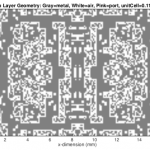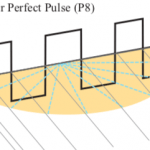 Tunnel Diodes for Backscattering Communications
Tunnel Diodes for Backscattering Communications
Francesco Amato, Gregory D. Durgin
2018 2nd URSI Atlantic Radio Science Meeting (AT-RASC)
The authors give an overview about the research progresses done in the latest years to enhance ranges of microwave backscattering communications with RFIDs exploiting the tunneling effect of tunnel diodes. The first prototype of a Tunneling RFID Tag built using a tunnel diode outperformed semi-passive tags by at least a factor of 5 in range. Tests on the 5.8 GHz backscattering link reached 1.5 km of ranges and demonstrated that a DC power of only 20.4 μW and 2.9[pJ/bit] are required to operate the Tunneling Tag.


 At the recent IEEE Antennas and Propagation Symposium (APS), Mike Varner presented work by Alhassoun, Varner, and Durgin on the use of perfect pulses to suppress specular reflections on a highly reflective surface. A classic use of this problem is the reduction of radar signatures of aircraft hangers and other buildings near runways. The flat faces of these structures can often produce large radar returns/multipath that distort ranging by either the air traffic control tower or a descending plane.
At the recent IEEE Antennas and Propagation Symposium (APS), Mike Varner presented work by Alhassoun, Varner, and Durgin on the use of perfect pulses to suppress specular reflections on a highly reflective surface. A classic use of this problem is the reduction of radar signatures of aircraft hangers and other buildings near runways. The flat faces of these structures can often produce large radar returns/multipath that distort ranging by either the air traffic control tower or a descending plane.